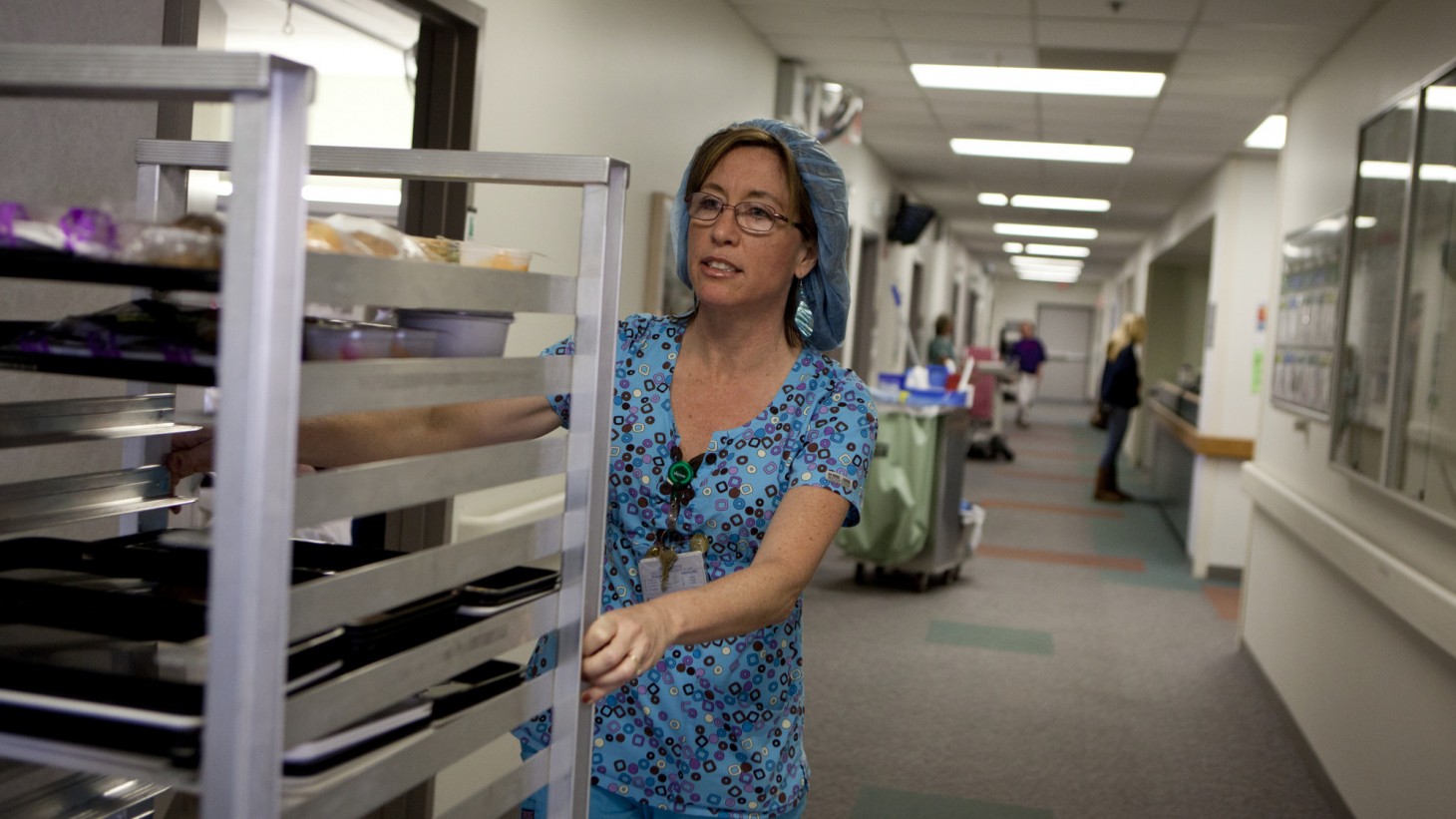
The Roseville nutrition team worked with doctors to more effectively diagnosis malnutrition in patients. Pictured is Nutrition Aide Marie Mandich, a member of SEIU-UHW.
Speak Up to Curb Patient Malnutrition
Malnutrition is a serious health risk, and being in a hospital sounds like a good solution, right? But patients may not be diagnosed, nor in the hospital long enough for it to be apparent. So, the clinical nutrition team at Roseville Medical Center made an effort to improve the diagnois of malnourished patients. Dieticians spoke directly to physicians, and sent notes with highlighted recommendations. In six months, the team's success at diagnosing malnutrition went from 52 to 82 percent.
Here's What Worked
- Using key phrases in malnutrition assessment to catch the attention of physicians
- Bolding their recommendations in notes to doctors
- Speaking directly to physicians about potentially malnourished patients
What can your team do to improve cooperation between physicians and other members of the care team?
number of percentage points the team's success rate climbed in diagnosing malnourished patients
Act Now—Tools to Help Your Team
- Poster: Bolder Communication Helps Diagnose Malnutrition A quick look at how to help your most vulnerable patients.
- PPT: Bolder Communication Helps Diagnose Malnutrition Northern California team improves communication.
- Teams That Created a Culture to Get Results PowerPoint: Three UBTs use performance improvement tools.
Need an Idea? Borrow One!
debug - term_args : 0
